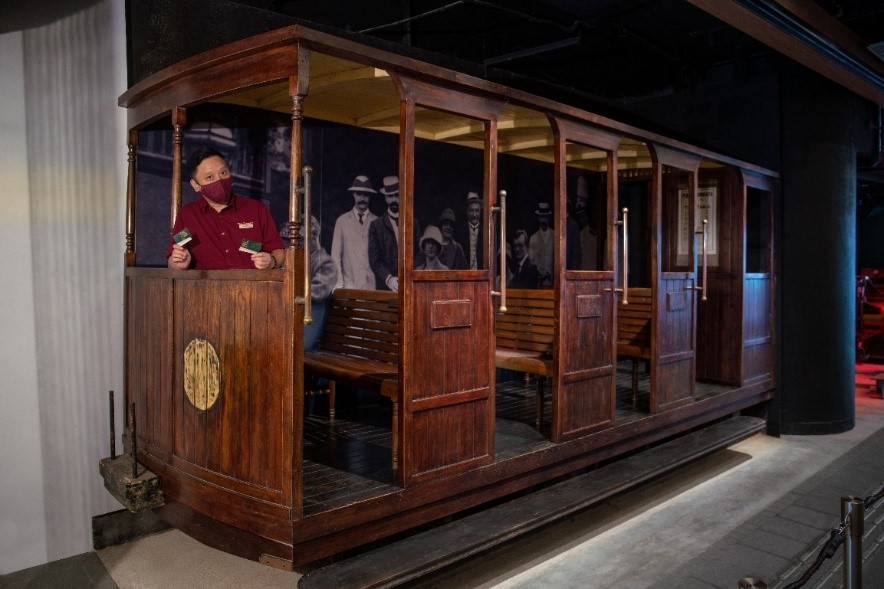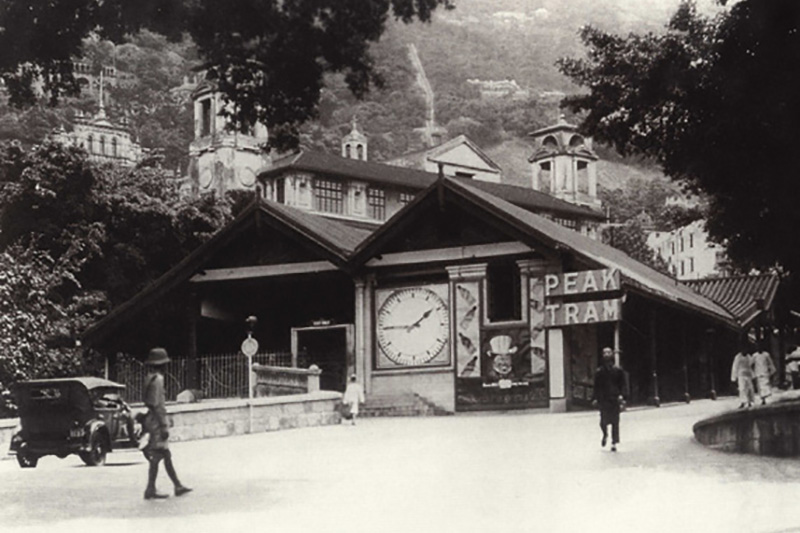PROBLEM: WHAT TO DO about Hong Kong’s damnable summer heat and humidity? That was the question on the mind of British colonial Governor Sir Richard MacDonnell in 1868.
Click! He had a brainwave. It was several degrees cooler and significantly breezier at the of Hong Kong’s highest mountain – known as Victoria Peak.
He could spend the cooler parts of the year at sea level and the horribly hot summer in a house on top of the mountain! Problem solved.
The governor of course did not know this at the time, but he started a tradition that led to the development of a whole community on top of the mountain and the development of a celebrated Hong Kong icon, the Peak Tram, for getting there and back.
SIXTH GENERATION
The tram has gone through many incarnations, and the latest version is officially the sixth generation – or seventh if you count the hand-held boxes known as “sedan chairs” or “palanquins” (pictured below) that were the original way for wealthy westerners to get to the top of Victoria Peak.

It was in 1882 that a proposal for a tramway system on Hong Kong Island was first put forward by Legislative Councillor Ng Ting-fong (伍廷芳) and seconded by Legislative Councillor and President of the Hong Kong General Chamber of Commerce, F. B. Johnson. It was prompted by a businessman named Alexander Findlay-Smith who had opened a hotel on the Peak, but had no easy way of getting customers to its doors.
Work on the Peak Tramway began in September 1885 and during three years of construction, the workers had to haul most of the heavy equipment and rails uphill without any mechanical support. Finally on 30 May 1888 at 8:00 a.m., the Peak Tram was opened by the then Governor of Hong Kong, Sir George William Des Vœu,, at a ribbon-cutting ceremony.

The Peak Tram, the first motorised means of public transport in Hong Kong and Asia’s first funicular railway, ran smoothly on its first day of operation. It made 150,000 passenger-journeys in its first year.

Before the opening of Peak Road (now Old Peak Road) in the 1920s, the Peak Tram was the only means of transport directly linking Central with the Peak.

During the Japanese Occupation of Hong Kong, the Peak Tram service was suspended for six months until 25 June 1942 due to severe damage to the Peak and mid-levels during the Battle of Hong Kong.
To improve passenger capacity and safety, the company embarked on a programme of modernisation of the cable car system in June 1986, which included the conversion to automatic operation, the removal of overhead cables, the construction of a new 1,650 cubic metre machine room under the terminus platform and the replacement of the old cable cars with newly manufactured ones.

Hong Kong was returned to China in 1997, marking the end of 155 years of British colonisation. With the opening of the Hong Kong-Macao Individual Visit Scheme in 2003, the number of Mainland Chinese tourists travelling to and from Hong Kong surged. As a result, the Peak Tram’s main service target became tourists from Mainland and around the world.

The Peak Tram route is 1,365 metres (about 0.87 mi) long with gradients ranging from 4 degrees to 25.7 degrees, and altitude ranging from 28 metres to 396 metres (131 to 1,312 ft). It stops at six stations: Central Terminus, Kennedy Road Station, MacDonnell Road Station, May Road Station, Barker Road Station, and Peak Terminus. The tram has a capacity of 2,800 passengers per hour.

Due to the narrowness of the mountain passes, most sections of the Peak Tram are only paved with monorails, but there is a meeting section between the May Road Station and Baker Road Stations for the two cable cars to intersect for boarding and alighting. Thus the Peak Tram is an engineering marvel, both in terms of performance and technology.
While local people don’t use it as ordinary transport (there are plenty of speedy, cheap buses to take you to the Peak), it remains a popular weekend treat for residents and week-round destination for tourists. The steep incline of the seats (which all face forwards, otherwise passengers would fall out) make the ride memorable and get children laughing.
A study by Hong Kong University indicated that some passengers experience a startling optical illusion. During some parts of the ride, they feel that the tram is level and the skyscrapers of the world’s tallest city are leaning back at a steep angle.

And of course, there are the glorious views of Hong Kong from the top. Governor Sir Richard MacDonnell would be amazed at the results of his desire for a cool breeze during the tropical summers.
Image at the top from Peak Tramways Ltd.
